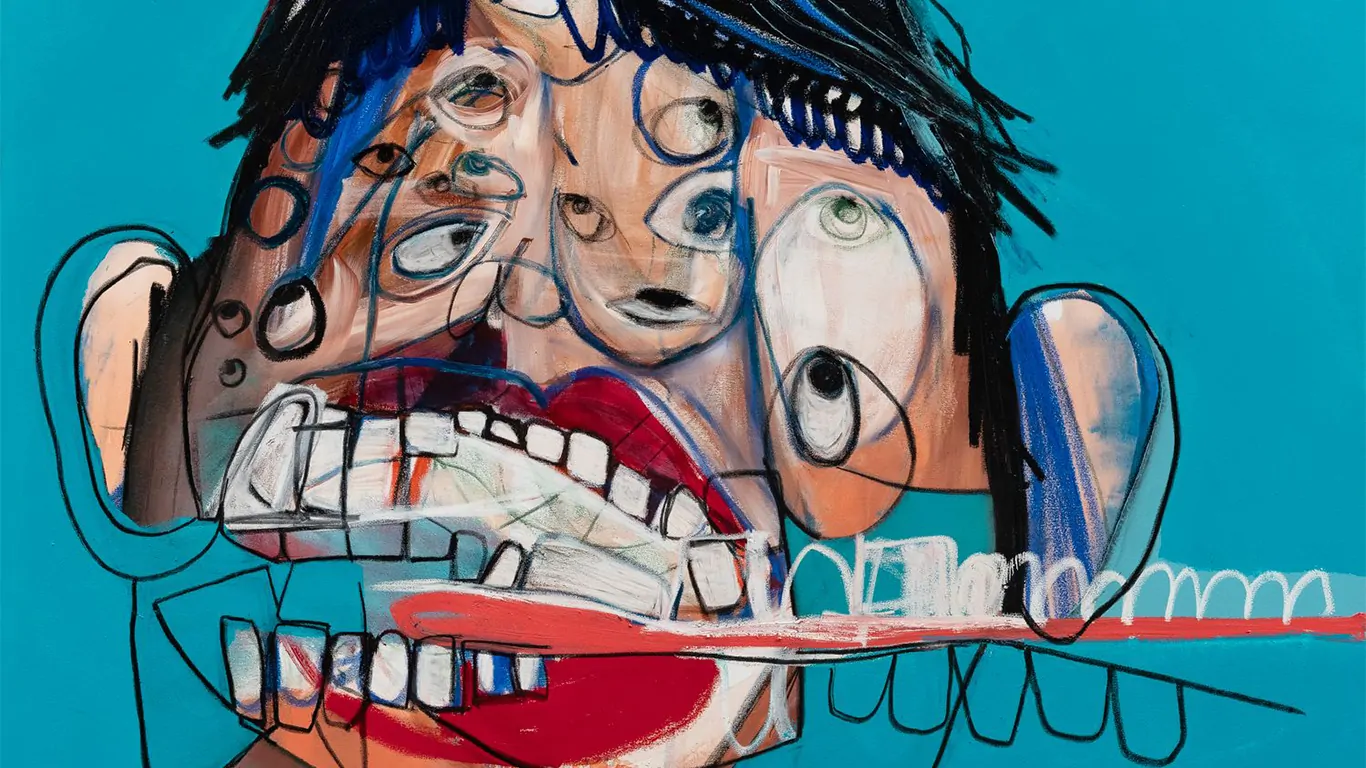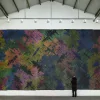Genesis Tramaine: SWEET JESUS!
12th October, 2024 — 16th November, 2024
Almine Rech
Paris, Turenne
Almine Rech Paris, Turenne is pleased to present SWEET JESUS! Genesis Tramaine’s fifth solo exhibition at the gallery, on view from October 12 to November 16, 2024. When history tells the story of contemporary art—or of avant-garde movements, which have long been taken for contemporary art itself—it focuses on a series of acts of liberation. Liberation from the academic model (Gustave Courbet and Realism), from the structure of our vision itself (Cubism), from the hand of the artist (delegating production to others), from representation, and even from inspiration, narration, etc.
At the same time that the notion of the end of avant-garde movements has become accepted, it has also been possible for art to liberate itself repeatedly from the same constraints—returning to the starting point, and thus justifying all kinds of “returns” or renunciations, meaning that nothing can be assumed and everything is open to debate.
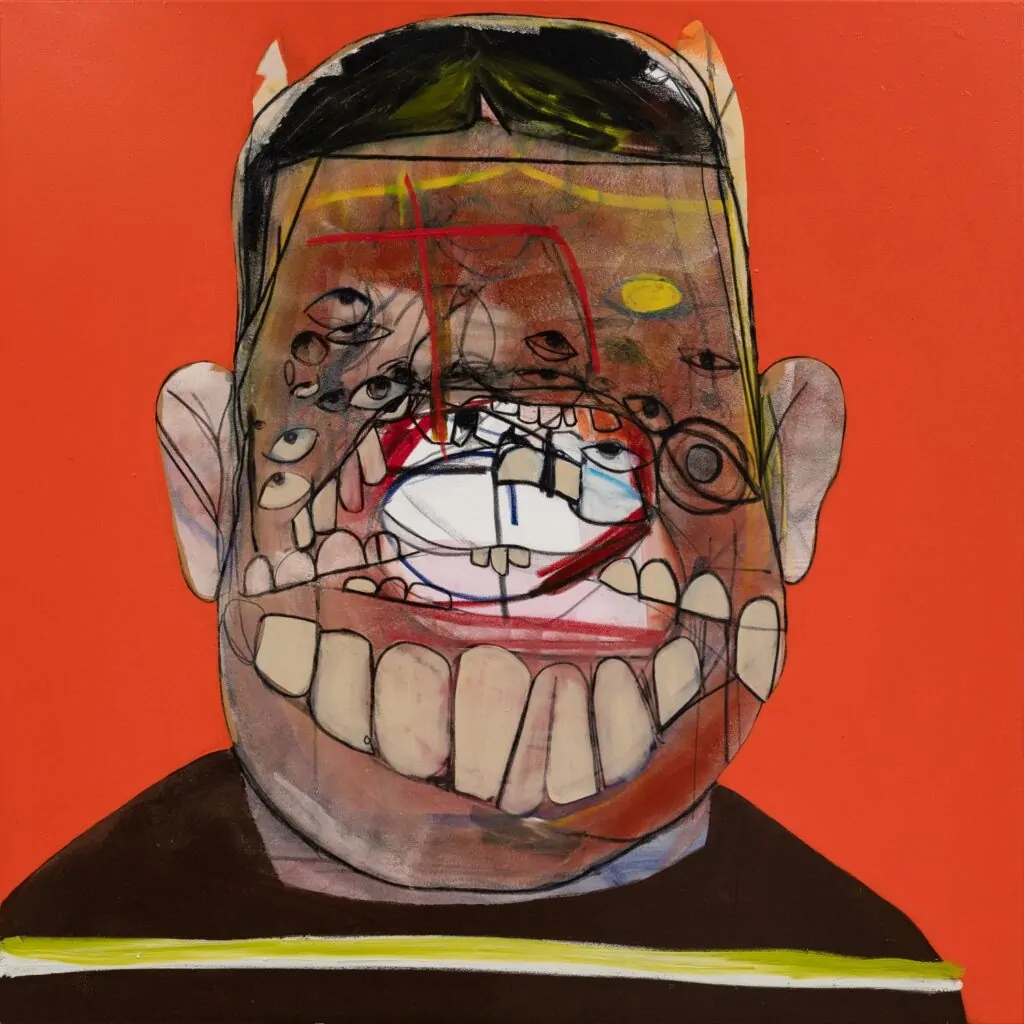
Oh! Ye’ Faithful, 2024
Acrylic, Holy Spirit, womb energy, salt, rain water, oil sticks,
oil pastel
182.9 x 182.9 cm 72 x 72 in
Courtesy of the Artist and Almine Rech
Photo: Charles Roussel
Depicting the lives of the saints is probably one of the very oldest liberations, far predating contemporary art. There has never been any discussion of returning to this practice, and while we sometimes attribute a mystical dimension to the experience of a particular painting (Rothko, Soulages), God seems to be completely absent from contemporary art: even iconoclastic approaches such as Andres Serrano’s seem to have vanished now.
Yet Genesis Tramaine, born in New York in 1983, defines herself today as “a devotional painter,” and specifically as “a queer devotional painter,” titling her 2018 exhibition in New York “God is Trans.” Through daily morning meditation and study, she explores the life of the saints, finding the inspiration and information that lead to her paintings. This calls to mind the Golden Legend, tales of the lives of 150 saints that were written by Jacques de Voragines between 1261 and 1266, inspiring artists from the Middle Ages on, especially Italian Renaissance painters. A former teacher who was trained as a mathematician, Tramaine is self-taught. “I’ve wanted to be an artist since I was a child. I took my prayers seriously, which means I began to develop a relationship with Jesus Christ, my Lord and Savior about 7 years ago. I asked God if I could paint and pray, help and give, as an offering of service for the rest of my life. And the paintings began to mature. I committed to the relationship that painting offers spiritually, in Jesus’ name.”
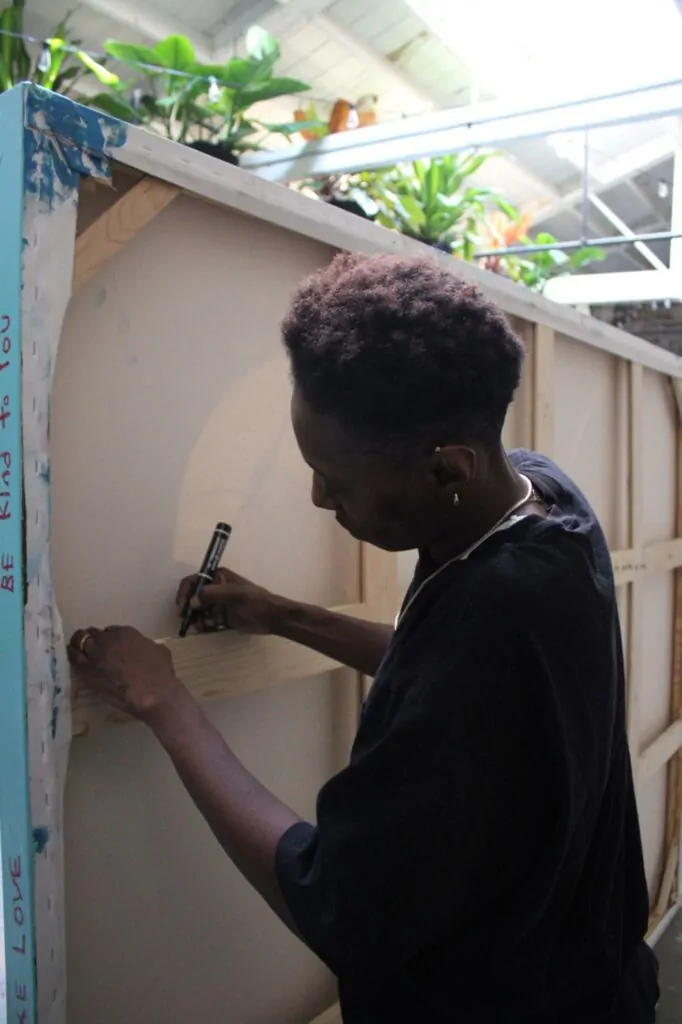
© Genesis Tramaine – Courtesy of the Artist and Almine Rech
By offering her artistic version of the tales defining the life of each saint, she wants to establish an alternative truth. “I think it’s important that you paint a real narrative, an honest reflection. I don’t think [my saints] look like saints as they have been given to us… [those] were false narratives.” One of the observations that Tramaine resists is the color of the saints’ skin in art history. “Also, it’s important to remember that the black narrative, unfortunately, has often been given to the world through a lens that is not our own. So it makes sense that my work may seem to be out of context when comparing it with how we’ve traditionally been allowed to be seen or shown. I disagree with much of the imagery that’s been fed to me. I literally draw and paint over it. It’s wrong. So instead, I say, ‘Use me, Lord, I’ll help them see the truth, because this is some bullshit.’”
The storytelling that precedes Genesis Tramaine’s work—information that is now considered essential to interpreting works of art—opens up the possibility of her paintings establishing a special relationship with viewers, offering a unique context for approaching her art.
But this narrative shouldn’t obscure another unique feature: her stylistic approach, which, although it may be the creation of a divinely inspired autodidact, seems to have a serious relationship with the history of painting—precisely the kind of relationship that stimulated avant-garde movements. Critics have emphasized Tramaine’s stylistic closeness to graffiti, and she herself has explained that she was familiar with graffiti in her childhood: “I grew up seeing good graffiti and not so good graffiti as a Brooklyn kid.” Her paintings also reveal stylistic continuations relating to the work of George Condo, Jean-Michel Basquiat, and de Kooning, and, more generally, the ambition to give portrait painting a new vitality. She expresses this by classifying her artistic media into three groups: “Natural Resources” (water and salt), “Holy Spirit” (rhythm, sound, connection covenant—relationship with self) and “Womb Energy” (water, light, future memory—ancestral intuition).
The new paintings that she is presenting at Almine Rech in Paris (her first solo exhibition in Paris, and her fifth with the gallery, which has shown her work in New York, Aspen, Brussels, and London) mark an exciting development. The figures from “Parable of Nana” and “Evidence of Grace” (her two previous solo shows at Almine Rech, in London in 2020 and Brussels in 2021, respectively), sported dozens of eyes, as if this signified their curious, voracious exploration of the world.
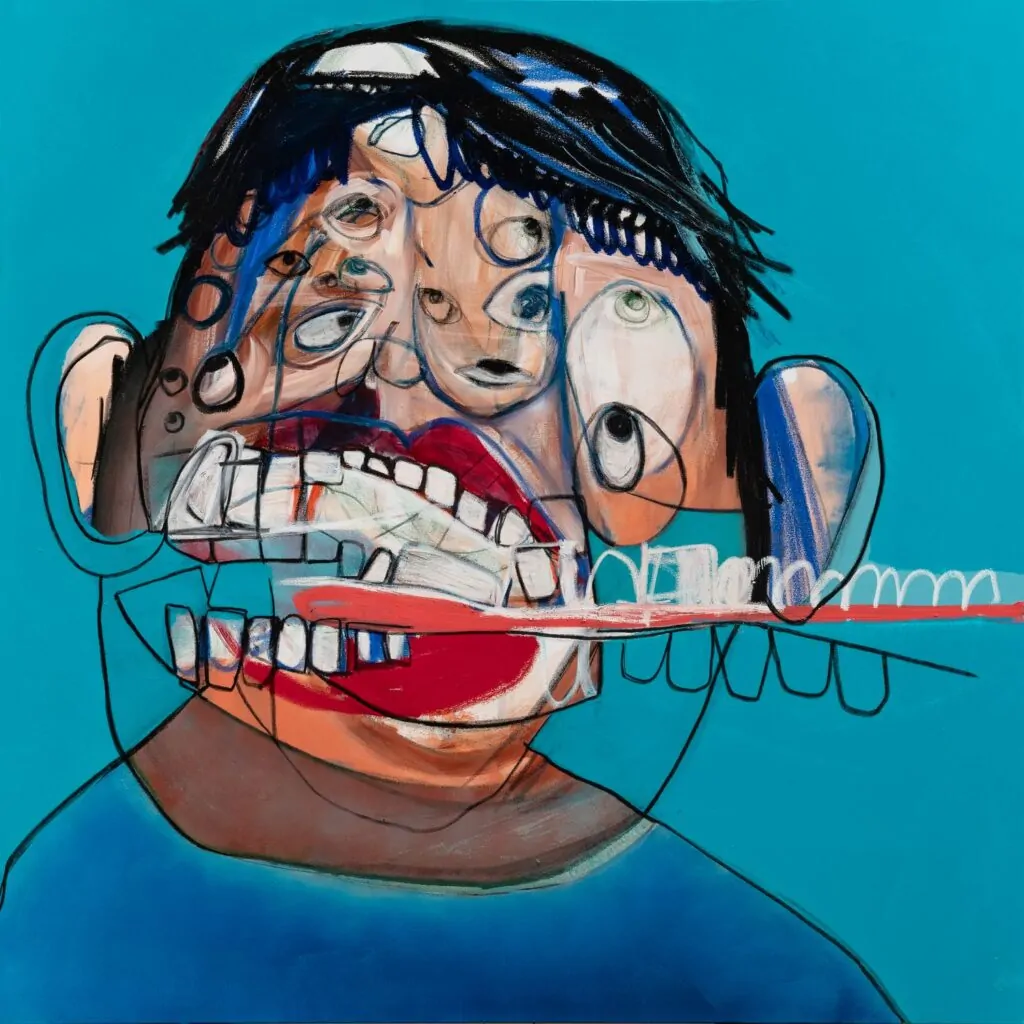
Eye for and Eye, 2024 (detail)
Acrylic, Holy Spirit, womb energy, salt, rain water, oil sticks,
oil pastel 182.9 x 182.9 cm 72 x 72 in
Courtesy of the Artist and Almine Rech
Photo: Charles Roussel
Frozen in silence, these serious and often sullen figures seemed to clench their teeth… they expressed their personality, their history, their feelings in a different way. The new pantheon of figures in “Sweet Jesus” (the title she has given her Paris show, which is loaded with meaning all on its own) have their mouths open and all their teeth displayed—often many more teeth than usual, echoing the plethora of eyes Tramaine painted previously. Her figures, it seems, have started to smile. To shout, perhaps; to sing—why not?; and to talk—most definitely.
“Saint Sarai” (2024) shows the wife of Abraham (Tramaine has chosen to use the Hebrew form of her name instead of Sarah), who seems to have many things to say. As Tramaine explains, “She is a remarkable story of how God answers your fears with love. She bears a child well into her old age.” “Nana Ate the Manna” (2004) brings back the figure of Nana, this time discoursing on a Bible verse (“Our ancestors ate the manna in the wilderness; as it is written: ‘He gave them bread from heaven to eat,’” John 6:31-51) and clearly ready for a lengthy debate. But the talky figures in these portraits may simply serve to attain another form of expression: “It’s a painted language. It surpasses our literal language,” Genesis Tramaine says.
— Eric Troncy, French art critic, curator, and the Director of the Consortium Museum in Dijon
Genesis Tramaine: SWEET JESUS! opens on the 12th of October, 2024 until the 16th of November, 2024 at Almine Rech
©2024 Almine Rech


